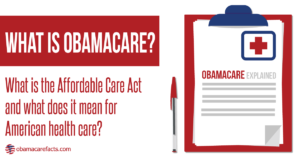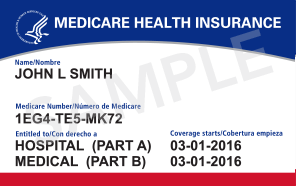
NBC NEWS
MAGGIE FOX
DEC 30 2016, 10:11 AM ET
As Republicans prepare to take over the White House and both houses of Congress next month, they’ve got President Barack Obama’s signature legislation squarely in their sights.
Some GOP leaders say they want to repeal the 2010 Affordable Care Act as soon as possible and figure out how to replace it later. Others say they may want to move more cautiously, changing certain aspects while keeping others. What’s clear is that big changes are in the works — even as the majority of Americans say they’d like to keep most of what the law offers.
Here are five important things to know about Obamacare:
It isn’t just health insurance
Most of the news about the Affordable Care Act, widely known as Obamacare, focuses on the health insurance exchanges, which are a major part of the law’s goal — to help get health insurance to people who don’t already have it. But the law also has provisions aimed at making sure health care is better overall.
One big objective is to encourage doctors to not only treat people when they are sick, but to take an active role in keeping them well. Some of the tools the law employs include changes in the way doctors are paid and the establishment of Accountable Care Organizations — groups that help hospitals and doctors work together in ways that cut down on mistakes and keep patients healthy.
The overall aim of the legislation was to bring down costs and improve the health of Americans.
It’s not government insurance
Many people believe Obamacare is government insurance. But there is no new government health insurance plan offered under the law. What Obamacare did was create a system for private health insurance companies to offer coverage to people who can’t get affordable coverage another way.
The federal government subsidizes the premiums for some of the plans offered on the health insurance exchanges. It varies depending on income and on the plan offered.
States regulate health insurance, and companies decide which states they’ll offer health insurance in.
The Affordable Care Act does add a layer of federal regulation onto health insurance. Insurers must provide a certain minimum of coverage, including paying the full cost of preventive medicine visits, cancer screening, vaccines and birth control. The law requires insurance companies to take all comers, even if they’ve been sick, prevents them from excluding coverage for “pre-existing conditions” and stops the once-common practice of capping payouts.
And the law has the federal government paying the full cost of expanding Medicaid to cover more people. Nineteen states have chosen not to.
Plus, the law requires that virtually everyone get health insurance. This was something the health insurance companies demanded. They argued that without such a requirement, people would wait until they were sick to buy health insurance.
It’s not even most people’s health insurance
More than 60 percent of Americans get health insurance through an employer. Another 16 percent use Medicare or Medicaid. There’s the VA and Tricare for the military. Only a few people buy their own insurance on what’s called the individual market. Less than 10 percent of the population gets insurance from the private plans offered on the Obamacare exchanges.
It probably didn’t make your premiums go up
Health insurance premiums have been rising for years. One Commonwealth Fund analysis found that health insurance premiums rose by 62 percent for family coverage between 2003 and 2011 – before Affordable Care Act provisions even kicked in. Part of the impetus behind healthcare reform was to bring premiums down.
Premiums for family coverage offered by employers rose 3 percent from 2015 to 2016, the Kaiser Family Foundation found. Premiums for plans offered via the Obamacare exchanges will go up by 22 percent on average next year as companies work to find a way to make the plans they offer profitable, and the federal government is eating 85 percent of that.
U.S. health care was lousy long before Obamacare
Before Obamacare was invented, Republicans and Democrats alike agreed strongly that healthcare reform was vital. They just didn’t agree on all the details of how to fix the system.
The U.S. has by far the most expensive health care system in the world, and demonstrably gets far less for all its spending. Most other wealthy countries have a single-payer or nationalized health system.
Last year, Americans spent $3.2 trillion on health care – nearly $10,000 a head. Australia spends $4,400 per capita; Canada spends $4,600. Only Luxembourg comes close to U.S.spending at $7,700 per person.
Yet report after report finds Americans coming in dead last on various health measures compared to people in other comparable countries. Americans fare worse than citizens of other rich countries in rates of infant mortality; injury and homicide rates; drug abuse; obesity and diabetes; heart disease and lung disease.
U.S. life expectancy ranks 31st internationally, behind Costa Rica, Chile and Cyprus but ahead of Cuba, Mexico and Russia, according to the Organization for Economic Cooperation and Development. It ranks 43rd out of 201 countries, according to the World Health Organization.
Questions about Obamacare and reimbursement? Physician Credentialing and Revalidation ? or other changes in Medicare, Commercial Insurance, and Medicaid billing, credentialing and payments? Call the Firm Services at 512-243-6844


